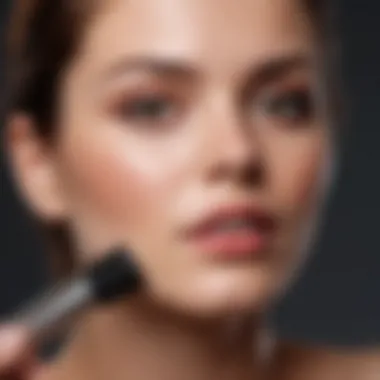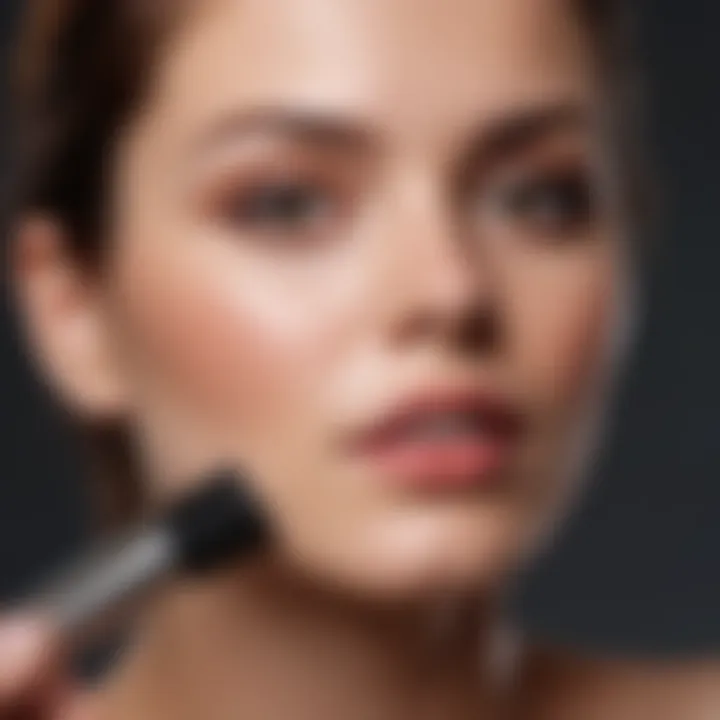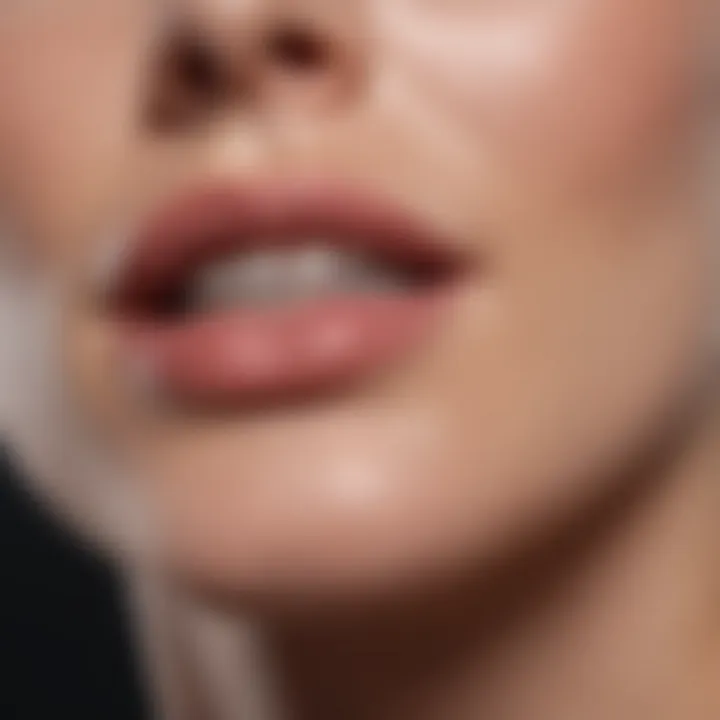Comprehensive Guide to Shaving Vagina Hair: Techniques, Considerations, and Care


Intro
Shaving vaginal hair is a personal choice for many individuals. It can be influenced by social norms, personal preferences, or even comfort. This guide provides detailed insights into various techniques for shaving, considerations that might come into play, and essential aftercare practices. Understanding the reasoning behind these choices can help foster a positive self-image and tailor grooming practices to individual needs.
Techniques for Shaving Vaginal Hair
Basic Shaving Techniques
The act of shaving itself can be performed using several methods. The common tools include a standard razor, an electric trimmer, or even specialized products like bikini trimmers. Here are some basic techniques:
- Preparation is Key: Always begin by softening the hair and skin. Taking a warm shower can make hairs easier to shave while reducing irritation.
- Use the Right Tools: Choose a clean, sharp razor. Dull blades can lead to cuts or nicks.
- Shaving Cream or Gel: Use a product designed for sensitive skin. This helps achieve a smoother glide, preventing burns or irritation.
- Shaving Direction: Always shave in the direction of hair growth. This reduces the risk of ingrown hairs and irritation.
Post-Shaving Care
Once shaving is complete, proper aftercare is vital.
- Rinse Thoroughly: Ensure all shaving cream is washed away. Leftover residue can lead to irritation.
- Moisturize: After rinsing, apply a fragrance-free moisturizer. This can soothe the skin and prevent dryness.
- Avoid Tight Clothing: In the hours following a shave, choose loose clothing to prevent chafing.
Considerations Surrounding Shaving
Social Considerations
Cultural and societal influences play a significant role in grooming practices. Shaving or not shaving can reflect personal choices alongside societal expectations.
Health and Safety Considerations
Safety is crucial, as improper shaving methods can lead to infections or skin issues. Always ensure tools are sanitized, and if any complications arise, consult a healthcare professional.
Alternative Grooming Techniques
Shaving is not the only option. Some alternatives include waxing, laser hair removal, or simply trimming. Each of these methods comes with its own set of pros and cons, depending on personal preferences and skin types.
End
In summary, shaving vaginal hair involves understanding the techniques, considerations, and aftercare necessary for the best results. It is a deeply personal decision that reflects individual needs and social influences. It is essential to approach the practice safely and thoughtfully.
Understanding the Practice of Shaving Vaginal Hair
Shaving vaginal hair is a topic that reflects both personal grooming preferences and social norms. Understanding this practice is essential not just for practical reasons, but also for exploring its origins and the motivations behind it. Awareness of these elements can lead to informed decisions, making the act of shaving more than a simple routine.
Historical Context of Body Hair Grooming
Body hair grooming has existed for centuries. In ancient Egypt, for instance, smooth skin was associated with cleanliness and status. Tools made from obsidian and bronze were used for hair removal, showing that the desire for hairless skin is not new. Throughout history, different cultures have had varying views on body hair. In western societies, the trend towards hair removal surged in the 20th century, influenced by fashion and media. This historical perspective allows us to appreciate how societal views have shaped personal choices over time.
Cultural Approaches to Vaginal Hair Removal
Global perspectives on vaginal hair removal are diverse. In some cultures, removal is considered a standard aspect of beauty, while in others, it may be viewed as unnecessary. Practices can range from shaving to waxing, with preferences influenced by factors such as climate, tradition, and local norms. For instance, in certain Asian cultures, body hair may be less common due to different grooming practices. Understanding these cultural approaches helps one recognize that shaving can be a personal and sometimes cultural statement.
Personal Motivations Behind Shaving
There are numerous motivations for why individuals choose to shave vaginal hair. Personal comfort is a primary reason; many find it more comfortable to have less hair, especially in warm weather. Additionally, people often associate grooming with cleanliness and hygiene. Some individuals feel empowered by their grooming choices, seeing it as a way to express their identity. Conversely, some choose to maintain body hair as a form of resistance against societal pressures. Recognizing these motivations illustrates that shaving is not merely about aesthetics, but involves deeper personal choices.
"Understanding the motivations behind grooming choices can help individuals make decisions that align with their personal values and comfort levels."
Methods of Shaving Vaginal Hair


Understanding the methods available for shaving vaginal hair is vital for achieving desired results while also minimizing potential discomfort or complications. The techniques employed can significantly impact skin health, comfort, and overall satisfaction with the grooming process. Shaving, while a common practice, should be approached with knowledge of the various methods, allowing individuals to choose the one that aligns with their needs and preferences. This section will delve into the specifics of using razors, electric shavers, and alternative hair removal techniques to provide a comprehensive view of what options are available.
Using a Razor: Pros and Cons
Using a razor is one of the most traditional methods for shaving vaginal hair. It offers several advantages, such as accessibility and affordability. Most people can find a good razor in local stores without much hassle. Additionally, shaving can be a quick process, making it appealing for individuals who prefer efficiency. However, there are also notable drawbacks. One major issue with shaving is the risk of razor burn and nicks, especially in sensitive areas. These issues can lead to discomfort and sometimes even infections if not dealt with properly. Thus, it's important for those who choose this method to be cautious and use products designed to decrease friction and protect the skin.
Electric Shavers: Ease and Efficiency
Electric shavers present a modern alternative to traditional razors. These devices are often designed to reduce the risk of cuts and irritation. Their ease of use makes them especially popular among individuals who prioritize convenience. Many electric shavers come with features like adjustable settings, allowing for customizable trimming lengths. This adaptability can help cater to individual preferences for hair length. However, some may find that electric shavers do not provide as close a shave as traditional methods. This could result in a maintenance routine that requires more frequent upkeep to achieve a similar aesthetic.
Alternative Hair Removal Techniques
Waxing
Waxing has grown in popularity as an alternative method for removing vaginal hair. This technique involves applying heated wax to the area, followed by placing cloth strips and quickly pulling them away to remove hair from the root. One of the main benefits of waxing is its long-lasting results. The hair takes longer to regrow compared to shaving, which may appeal to those looking for reduced maintenance. A key characteristic of waxing is its ability to create smoother skin, as it removes hair from the follicles. However, individuals should be aware of the potential discomfort associated with the process, especially for first-time users.
Depilatories
Depilatories are chemical-based products designed to dissolve hair, allowing for easy removal without the use of a razor. One advantage of depilatories is their accessibility; they are typically available in stores and come in various formulations tailored for sensitive areas. A notable characteristic is that they work quickly and can provide a smooth result without the risk of cuts. However, some users may experience skin irritation or allergic reactions, making it essential to conduct a patch test before full application. Additionally, the results may not last as long as waxing, leading to more frequent use.
Laser Hair Removal
Laser hair removal is a more permanent solution that uses concentrated light to destroy hair follicles. This method has gained traction for its efficiency and long-term results. A key feature of laser hair removal is its ability to selectively target hair, which can reduce the chance of ingrown hairs. It is favored by those who wish to minimize ongoing grooming efforts. However, this method often involves several sessions and can be costly, which may be a barrier for some individuals. Additionally, laser treatment should be performed by professionals to ensure safety and effectiveness.
Understanding these various methods will empower individuals to choose what works best for them, balancing convenience, cost, and skin health.
Pre-Shaving Preparation
Pre-shaving preparation is a crucial step in the grooming process. It sets the foundation for a smooth and safe shaving experience. Proper preparation helps to minimize discomfort, reduce the risk of irritations, and achieve better results. Before making any cuts, assessing skin condition and choosing suitable products are essential.
Skin Assessment and Sensitivity
Understanding your skin's condition is vital before shaving. Each individual's skin can vary significantly in terms of sensitivity, thickness, and any pre-existing conditions like eczema or allergies. Assessing skin sensitivity involves checking for any redness, bumps, or irritations. Pay attention to how your skin reacts to certain products previously used; this can inform your choices during shaving.
A person with sensitive skin may require different techniques and care than someone with tougher skin. Conduct a patch test with products you plan to use. This can prevent future reactions and ensures a safer shave. Overall, knowing your skin type allows for a tailored approach to shaving and can enhance comfort.
Choosing the Right Products
Shaving creams and gels
Selecting the right shaving cream or gel can significantly impact the shaving experience. Shaving products create a protective layer on the skin, allowing for a smoother glide of the razor. A good shaving cream is typically thick and can soften the hair, making it easier to cut. These creams often contain lubricating ingredients which help to minimize friction.
Many people prefer gel-based products due to their ease of application and clear visibility during shaving. They provide a slick surface that helps to avoid nicks and cuts. However, some gels may contain fragrances or alcohol that could irritate sensitive skin. It is important to choose products that are specifically designed for intimate areas. In this way, you can avoid potential issues.
Moisturizers
Moisturizers play an integral role in pre-shaving preparation. They provide hydration to the skin, which is essential for maintaining its health. Using a good moisturizer before shaving can prevent dryness or irritation post-shave, especially for those with sensitive skin. Ingredients like aloe vera or vitamin E are popular choices as they provide soothing properties.
While it is vital to keep the skin hydrated, it is also essential to choose the right moisturizer. Some products may leave a greasy feel, which can interfere with the shaving process. Lightweight formulations are recommended as they easily absorb into the skin without leaving residue. Thus, a moisturizer can ensure skin elasticity and comfort during and after shaving.
Hygiene Practices Pre-Shave
Hygiene plays a significant role in preparing for shaving. Start with washing the area with warm water to loosen hair follicles and remove any impurities. Using a mild soap free from harsh chemicals is advisable. This process clears the skin of bacteria, reducing the risk of infections.
Keep your shaving tools clean as well. Cleaning razors can help prevent infections or irritations. Consider using alcohol pads to wipe down the blades and storing them in a dry environment after each use. This step enhances hygiene and extends the life of the razor. Proper hygiene practices before shaving will contribute to a smoother experience.


Shaving Techniques
Understanding shaving techniques is essential for those considering the practice of removing vaginal hair. This section aims to illuminate various methods, highlight benefits, and provide considerations that contribute to an effective and safe shaving experience. Appropriate techniques not only enhance results but also minimize potential discomfort or adverse effects, thus making the process more satisfactory and less daunting.
Finding the Right Angle and Pressure
Achieving a close shave requires finding the right angle and applying suitable pressure. The angle at which the razor touches the skin can significantly influence the outcome. A typical recommendation is to hold the razor at about thirty degrees to the skin. This angle allows the blade to cut hair efficiently without dragging against the skin, which can lead to irritation. Applying too much pressure, however, can cause cuts and razor burn. A gentle touch is encouraged, allowing the weight of the razor to do most of the work rather than excessive force. This approach is particularly crucial in sensitive areas, as the delicate skin there is more susceptible to damage.
Techniques for Sensitive Areas
When it comes to sensitive areas, extra care is necessary to avoid complications such as nicks or irritations. Some techniques to consider include:
- Use of a sharp, clean razor: Dull blades increase the likelihood of cuts. A fresh blade reduces the stress placed on the skin during shaving.
- Short strokes: Rather than long sweeping movements, short, controlled strokes help maintain control and minimize accidents.
- Skin tautness: Gently stretching the skin while shaving can provide a smoother surface. This technique creates an even area for the razor, reducing the risk of cuts.
- Shaving in the direction of hair growth: This reduces the chances of ingrown hairs and irritation. Knowing how hair grows in various parts of the body allows for more effective shaving.
Post-Shaving Grooming
Post-shaving grooming is as crucial as the shaving process itself. After removing hair, the skin requires attention to ensure it remains smooth and healthy. Key post-shaving practices include:
- Rinsing with cool water: This helps to close pores, reducing the risk of irritation.
- Applying soothing products: Products like aloe vera or specialized aftershave moisturizers can hydrate and calm the skin. These products often contain properties that soothe any redness or irritation.
"Investing time in post-shaving care is essential to achieve longer lasting results and maintain skin health."
- Wearing loose clothing: Offering the skin some breathing room can help avoid friction and irritation after shaving. Tight clothing can rub against the freshly shaved skin, leading to discomfort.
- Avoiding hot baths or saunas: Immediately after shaving, it is beneficial to avoid elevated temperatures that can exacerbate irritation. This precaution allows the skin to recover at its own pace.
Post-Shaving Care
Post-shaving care is crucial for maintaining skin health and comfort after removing vaginal hair. This stage involves practices that not only alleviate potential irritations but also promote healing. Understanding and applying appropriate techniques can significantly enhance the shaving experience, reducing discomfort and promoting long-lasting skin health.
Skin Soothing Techniques
Aloe Vera
Aloe Vera is well-known for its soothing properties. This plant extract helps in calming irritated skin, a common issue after shaving. Its high water content and rich nutrients promote hydration, making it a valuable addition to post-shaving routines. One of the key characteristics of Aloe Vera is its anti-inflammatory effect, which can reduce redness and swelling, creating a more pleasant post-shave experience. Additionally, its ability to assist in the healing process of small nicks or cuts adds to its appeal as a post-shaving remedy. However, while generally safe for most, some individuals may experience allergic reactions, necessitating a patch test prior to a full application.
Hydrating Lotions
Hydrating lotions play an important role in maintaining skin elasticity and suppleness after shaving. The primary function of these lotions is to replenish moisture that may have been stripped away during the shaving process. A key characteristic is their formulation, often containing ingredients like glycerin or hyaluronic acid, which effectively lock in moisture. Hydrating lotions are especially beneficial for individuals with dry or sensitive skin, as they provide a protective barrier against environmental irritants. However, be cautious with scented lotions, as added fragrances can sometimes lead to allergic reactions or irritation on freshly shaved skin.
Identifying and Managing Irritations
After shaving, it's common to encounter irritations such as redness or bumps. Identifying the specific causes is essential for effective management. Common irritants may include the choice of razor, shaving cream, or the technique used during shaving. Keeping a diary of products and methods can be helpful in pinpointing triggers. Redness and bumps may indicate razor burn or ingrown hairs. Solutions range from applying soothing creams to adjusting shaving methods in future sessions.
Long-Term Skin Health Strategies
Investing in long-term skin health involves a combination of practices. Regular exfoliation helps remove dead skin cells, decreasing the likelihood of ingrown hairs. Choosing products labeled as non-comedogenic can prevent clogged pores. Additionally, implementing a consistent moisturizing routine ensures that the skin remains hydrated and resilient. It is also wise to avoid harsh chemicals or fragrances in post-shaving products, opting instead for gentle, sensitive-skin formulas. This holistic approach can improve overall skin health and reduce the occurrence of post-shaving complications.
Practicing mindful post-shaving care is an integral part of the grooming routine that can lead to healthier skin and a more comfortable experience.
Common Challenges and Solutions
Shaving vaginal hair can be a personal choice for many, but it also comes with various challenges. Understanding these common challenges is essential for anyone considering this grooming method. Awareness leads to better preparation and more positive outcomes. Each challenge discussed here carries its own set of solutions, allowing individuals to navigate the process more smoothly.
Dealing with Razor Burns
Razor burns are a common issue experienced after shaving. They often manifest as red, irritated patches on the skin that can feel uncomfortable. To mitigate this, using a sharp, clean razor is crucial. Dull blades are more likely to irritate the skin, so replace your razor frequently. Additionally, applying a moisturizing shaving cream creates a smoother glide, which can lessen friction.


After shaving, you should cool the skin down. You can use a cold compress or simply splash cold water on the area. If razor burns do occur, over-the-counter hydrocortisone cream can help reduce inflammation. For long-term care, consider incorporating soothing ingredients, such as aloe vera, into your post-shave routine.
Preventing Ingrown Hairs
Ingrown hairs can occur when hair curls back into the skin after shaving. This often leads to painful bumps and irritations. Prevention is key here. First, always shave in the direction of hair growth. This helps the hair emerge cleanly without being forced back into the follicles.
Exfoliating is another effective method. Use a gentle scrub or a loofah a few times a week, particularly before shaving. This removes dead skin cells that might trap hairs. Additionally, moisturizing after shaving can prevent dry skin, which may contribute to ingrown hairs.
Avoiding Allergic Reactions
Allergic reactions can arise from products used during the shaving process, such as creams, soaps, or even aftercare products. To avoid reactions, perform a patch test with any new product. Apply a small amount to the inner arm and wait 24 hours to see if any redness or irritation develops.
Choosing fragrance-free and hypoallergenic products can also reduce the risk of allergic reactions. If irritation occurs despite caution, cease using the product and consult a dermatologist if needed. Staying vigilant about ingredient lists and personal allergies is fundamental to a positive shaving experience.
Awareness of potential challenges is crucial. By preparing and understanding the solutions, you can achieve a more enjoyable grooming experience.
Personal Choices: Shaving or Not Shaving
The decision to shave vaginal hair is deeply personal and influenced by various factors. Understanding this choice is crucial in a broader dialogue about body autonomy and grooming practices. Each individual's motivation varies, and this section will explore the specific elements that guide these choices. The benefits of shaving, alongside the considerations against it, contribute to a complex landscape of personal grooming.
Empowerment Through Hair Removal Choices
For many, the decision to shave is seen as an act of empowerment. Shaving or choosing not to shave can be an assertion of personal freedom. Individuals can express their identity and preferences through their grooming choices. This autonomy fosters a sense of control and can positively impact self-esteem.
Moreover, many feel that hair removal can enhance their confidence, especially in intimate situations. Some may view it as aligning with aesthetic preferences, which may stem from societal influences or personal experiences. However, the choice should always prioritize comfort and personal values, ensuring it is not made under pressure from external expectations.
Understanding Individual Preferences
Individual preferences play a significant role in the decision-making process regarding hair removal. These preferences can be influenced by cultural backgrounds, societal norms, and personal experiences. While some might prefer a clean-shaven look for its perceived cleanliness, others may embrace natural grooming as part of their identity.
The importance of understanding these preferences is profound. Preferences are not merely aesthetic but also tied to comfort and body image. It is essential to recognize that everyone's journey with their body hair is uniquely personal. The decision to shave or not should reflect genuine self-acceptance and individual values.
Trends in Body Hair Grooming
Over the years, trends in body hair grooming have evolved considerably. What was once considered the norm may now seem outdated, and emerging trends often challenge previous assumptions about beauty and grooming. For example, the rise of body positivity movements has inspired many to embrace natural hair in all its forms.
Social media has amplified this shift, presenting diverse perspectives on body hair. Influencers and celebrities often share their own grooming choices, which can motivate discussions around the subject. As trends shift, the choice to shave or not may become less conventional, allowing for more personal expression without the constraints of societal expectations.
"Personal grooming should reflect individual comfort and authenticity, rather than society's transient demands."
Closure
In this article, the importance of understanding the practice of shaving vaginal hair is emphasized. Many people engage in this grooming practice for various reasons, ranging from personal comfort to aesthetic preferences. Knowing the techniques, considerations, and care associated with shaving can significantly enhance the experience and outcomes.
Understanding the different methods available, such as using a razor or electric shaver, allows individuals to make choices that suit their specific needs. Each technique comes with its own set of advantages and drawbacks, which should be carefully evaluated. Furthermore, proper pre-shaving preparation and post-shaving care are crucial to avoiding common issues like irritation and ingrown hairs.
This guide also highlights the social components that influence personal choices regarding body hair grooming. Having a clear grasp of one’s motivations and the cultural context can empower individuals to make informed decisions. The conversation surrounding grooming choices has evolved, reflecting broader changes in societal attitudes towards body hair.
Understanding these layers can offer a multifaceted view of shaving that transcends mere physical appearance. This comprehensive approach ensures that readers are not only equipped with practical advice but feel empowered to navigate their grooming journey.
Recap of Key Points
- Shaving vaginal hair encompasses various methods, including razors and electric shavers.
- Pre-shaving preparation is essential for a safe and effective experience.
- Post-shaving care can help manage irritations and maintain skin health.
- Personal motives for shaving may vary and can be influenced by cultural perspectives.
Encouragement for Informed Choices
Making informed choices regarding shaving is about understanding one's preferences and the techniques available. Individuals should consider their skin type, hair texture, and personal comfort when deciding how to groom. It is also advisable to educate oneself on the potential risks and benefits associated with different methods.
Ultimately, the decision to shave or not should come from a place of empowerment and self-awareness. Taking the time to reflect on personal values and feelings towards body hair can enrich the grooming experience. This comprehensive guide aims to equip readers with the necessary insights to navigate this aspect of personal grooming confidently and effectively.
"Knowledge is power. Empower yourself with the right information and techniques to make choices that work for you."
By embracing thoughtful grooming habits, individuals can foster a more positive relationship with their bodies, aligning their choices with their unique identities.



